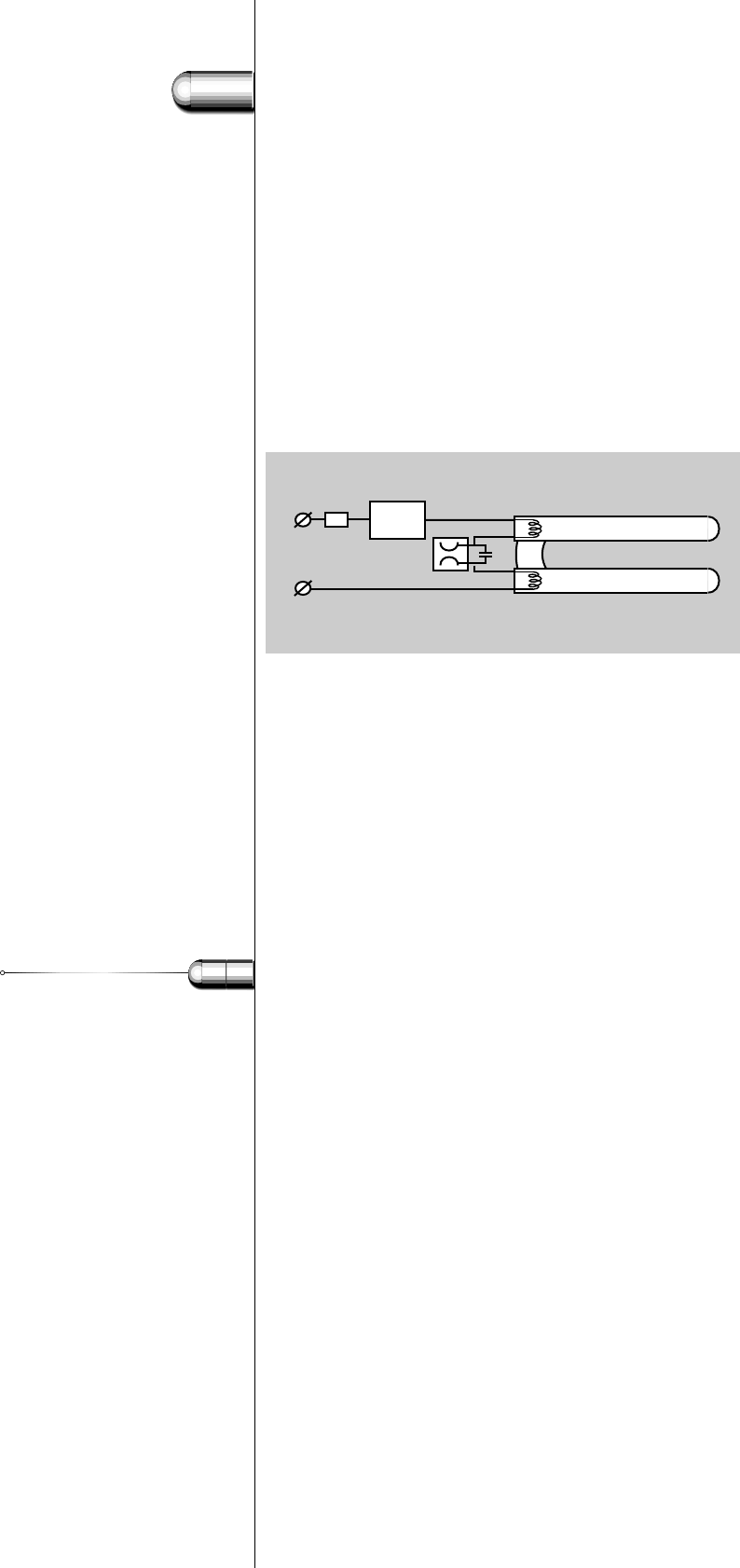
Information about lamps can be found in the lamp documentation,
where also the type of lampholder or lamp cap is mentioned. Be sure
to use the appropriate lampholder,as there are many different types.
Lamp types with different wattage are in principle not interchangeable
in a certain circuit, even though they may have the same lamp cap and
do fit in the same lampholder.
In some lamp types the glow-switch starter is incorporated in the
lamp base (2-pin version PL). In the SL family the total electric circuit
is incorporated with the lamp in the outer shell (see Fig. 107).
In the luminaire documentation, information can be found on which
lamp types can be used.When installing other than specified types,
electrical, thermal or lighting problems will arise. In the luminaire
documentation it can also be found if the gear is incorporated in the
luminaire and what the cable entries and connections are.
In the gear documentation, information can be found about the
electrical terminals and the electrical diagrams.Also the value and the
voltage range of capacitors is mentioned here.
The remaining system-related components and subjects mentioned
above will be described in the following sections.
Capacitors
Two types of capacitors are possible in fluorescent lamp circuits. One
type is the parallel compensating capacitor for power factor
improvement, connected across the mains.The second type is the series
capacitor which also determines the lamp current.
Series capacitors are used in capacitive or duo circuits.
In installations with fluorescent lamps of more than 25 W, capacitors
are necessary for power factor correction, as the power factor of an
inductively stabilised circuit is only approx. 0.5. Power factor
compensating capacitors are connected across the mains supply voltage
(parallel compensation) between phase and neutral (220/240 V).
In the relevant ballast documentation figures can be found for the
capacitor value in microfarad (µF) for a certain combination of lamp
and supply voltage to achieve a power factor of ≥ 0.9.
Every user can in fact create his own solution for obtaining the necessary
capacitance.
32
5
116
Fig. 107.The circuit of an SL lamp
consists of the following components:
1. Discharge tube,
2. Starter,
3. Capacitor,
4. Ballast,
5.Thermal protector.
3.1 Components
L
N
mains
supply
1
3
2
4
5


















